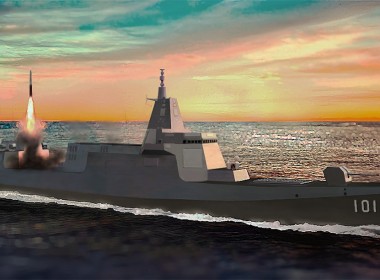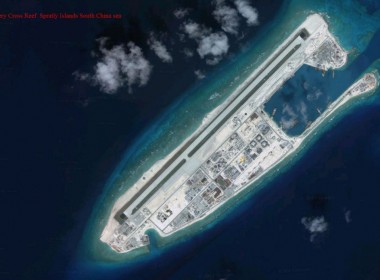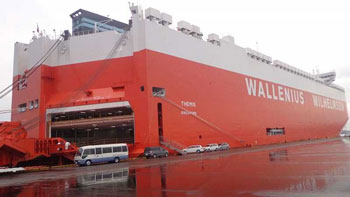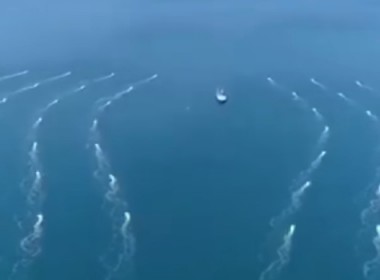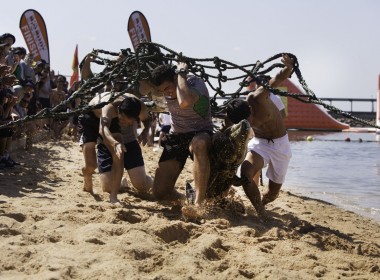COLUMN | China upgrading its amphibious warfare fleet [Naval Gazing]

Fixed-wing aircraft carriers, and nuclear-powered submarines are generally seen as the capital ships of today, and are the yardsticks against which navies’ capabilities are measured.
They are, though, just two parts of the big-ticket triumvirate at the core of contemporary naval power. Much less is heard about the third element of this triumvirate, namely large amphibious warfare vessels.
China’s PLA Navy (PLAN) has been undergoing headlong expansion over the past 20 years, including the addition to its surface fleet of a Ukraine-built aircraft carrier, as well as nuclear-powered attack, and ballistic missile-armed submarines. Until recent years, though, the service’s amphibious capabilities have received relatively little emphasis.
Late September 2019 saw the launch of a 40,000-tonne, 235-metre Type 075 landing helicopter dock (LHD) for the PLAN. Constructed by Hudong-Zhonghua Shipbuilding, the ship features a full-length flight deck, connected to internal hangars by four aircraft lifts, and a submersible well deck. It is armed with H/PJ-11 close-in weapon systems (CIWS), and HHQ-10 Air defence missiles.
Propulsion is probably provided by diesel engines, giving a speed of about 23 knots.
Expected to commence sea trials within the next year, the LHD will be capable of operating up to 30 combat helicopters. These are likely to include Z-8, and the new, larger, Z-18 troop transports, as well as Z-9 attack helicopters. A short/vertical take-off and landing (STOVL) variant of the new J-31 fighter might also eventually be embarked.
Carried internally will be landing craft, and Yuyi-class assault hovercraft. The Type 075 will also have significant command and control capabilities
Another LHD is currently under construction by Hudong-Zhonghua, while intelligence reports indicate that an enlarged version is being developed.
Meanwhile, commissioning of the PLA Navy’s Type 071 landing platform dock (LPD), also produced by Hudong-Zhonghua continues apace. Six of these ships are reportedly in service, with a seventh example fitting out, and China has recently broken into the potentially lucrative export market for amphibious warfare vessels, by securing an order for a Type 071 from the Royal Thai Navy.
The 25,000-tonne, 210-metre LPD has a stern flight deck, and hangar, to facilitate operations by up to four Z-8 helicopters, while the well deck can house four Yuyis. Conventional landing craft are carried on davits, while armament is a 76mm gun, and two AK-630 CIWS. Diesel engines give a top speed of about 25 knots.
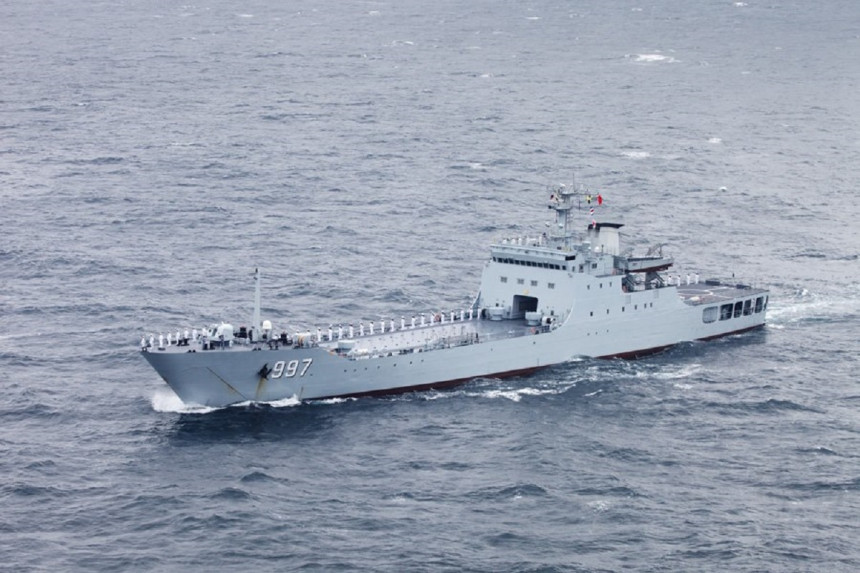
Supporting these major PLAN assets are large numbers of smaller amphibious warfare vessels. These include 15 landing ship (tank) (LST) of the 4,800-tonne Yuting II-class, 10 of the 7,000-tonne Yuting LSTs, and about 40 smaller landing ships of various classes.
Essential to a balanced PLAN force is the service’s Marine Corps, which relies mainly upon dedicated amphibious warfare vessels for operational deployment. Reformed in 1967, after having been disbanded in the 1950s, recent years have seen the marines re-equipped with modern armament and vehicles.
There is considerable speculation over Beijing’s motives for building up its amphibious warfare fleet. It is widely supposed that this expansion is at the centre of China’s strategy to bring what it terms the “renegade province” of Taiwan to heel.
An invasion of Taiwan, though, is a daunting proposition. It would be impossible to form up an invasion flotilla without it being detected at an early stage by Taiwanese and US overhead surveillance. The constituent vessels of such a force, furthermore, would be very vulnerable to air, sea and sub-surface attack while transiting the confined waters of the Taiwan Strait.
The programme is actually very likely being driven mainly by number of other factors. China, for both strategic, and status, reasons, keeps a close eye on the naval capabilities of neighbouring power, and Japan has, over the past decade, commissioned four large flat-topped vessels. All are constructed to conduct amphibious warfare, and anti-submarine missions, while the two largest ships of the quartet are being upgraded to operate F-35B VSTOL fighter bombers
South Korea, for its part, has recently commissioned a second large flat-topped vessel.
The US Navy, meanwhile, has positioned the F-35B-equipped amphibious warfare vessel Wasp in Japan, with its under-construction sister ship, Tripoli, due to deploy there in 2021.
Also, viable long range amphibious capability is an essential element of sustained force projection, and will assist Beijing in exerting influence in areas of strategic importance, such as the Indo-Pacific region, and the South China Sea. Such capability sends a message that the PLAN can exert power not just at sea, but also on land, in disputed areas such as the Spratly and Diaoyu islands.
Some experienced analysts believe that another reason for the rising profile of PLAN amphibious forces might be disillusionment, among some of the Beijing leadership, over the progress of China’s cornerstone aircraft carrier, and nuclear-powered submarine projects.
Rumours are swirling around the long-delayed commissioning of the nation’s first indigenously-built carrier, the serviceability of the PLAN’s J-15 fighter jets, and technical problems being encountered by the Jin class ballistic-missile armed submarines. The launch of the first Type 75 at least provided some welcome good news story for the service.


